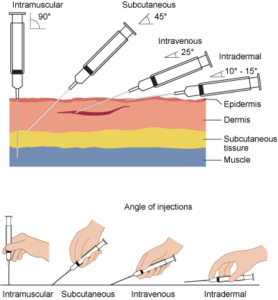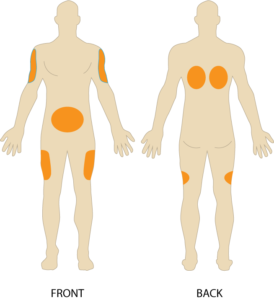INSULIN
VIEW COMPLETED NOTE
Patient identified by name, ID with picture and facial recognition. SN performed skilled observation and assessment of all body systems from head to toe. No signs or symptoms of acute distress noted. SN assessed home for safety & Risks for fall. Safety & preventative education. SN performed skilled observation and assessment, monitored vital sign and blood pressure and found them within normal limits. SN assessed mental and physical status, evaluated compliance, effectiveness and side effects of medication, diet and nutritional status, and patient’s and/or caregiver’s knowledge of signs and symptoms of complication. Blood-sugar was checked via by finger-stick, blood sugar level 120 mmol/l. SN prepared and administered 15 Units of Lantus Sub-Q to left lower quadrant (LLQ) of abdomen. Procedures were done following standard and universal precautions. Patient tolerated injection well without bleeding at site, complaint or complication. Patient is incapable of BS testing and or administer own insulin due complexity of procedure. Patient is unable to learn the technique to safely inject insulin due functional, physical, and mental limitations. There is no caregiver willing and able to perform this skilled care. Instructed patient/caregiver on food and diabetes, tips to manage Blood sugar following a proper diet. Instructed to use sugar substitutes instead or regular sugar. To watch for added sugar in juice and powdered drinks. Patient/caregiver verbalized understanding teaching.
Copy and paste the note, to start another note refresh the Desktop (F5 in Windows)
MED PASS TECHNIQUES. SUB Q INJECTIONS:
Check the physician’s order. Check which site is appropriate for this injection? Insure product is correct and the expiration date is appropriate.
1. Wash hands and apply gloves.
2. Roll insulin. (Avoids creating air bubbles)
3. Clean vial top with an alcohol wipe.
4. Draw up medication into a syringe according to product instruction and The Doctor’s order. Double check for accurate measurement. Tap out any air bubbles and fill the syringe to the proper level. (Insulin, Clear before Cloudy). Set on a disposable tray, Scoop technique to cap the needle only on a clean surface if needed. (syringes without safety pull ups). Never RECAP after though.
5. Cleanse the administration site with an alcohol wipe.
6. Pinch and fold skin with one hand. With the other hand, hold the syringe like a dart and insert the needle into the skin at a 45-90 degree angle and then release the skin. Reposition your hands so you can inject with the plunger. Inject all the medication using a steady slow technique. Do not withdraw the needle right away because you risk leakage. Count 6 seconds. Withdraw and do not rub afterwards.
Do NOT RECAP the needle after use. If there is a safety cap you may set it. Dispose immediately into a SHARPS container.
7. Wash hands prior to charting
8. FOR LOVENOX and other PREFILLED, DO NOT EXPEL AIR. ADMINISTER AROUND ABDOMINAL AREA ONLY. DO NOT RUB. Rotate, site, and chart. (remember safety cap)
MED PASS TECHNIQUES. FOR INSULIN PENS:
- Each Insulin pen has enough doses typically for one month worth of injections. 300 units per pen.
- Most insulin pens have an expiration of 28 days once left out after the first use.
- Levemir can be used for up to 42 days once left out after first use. Date your box with an open date. Lantus =28 days.
- Place a safety type of needle (Special to the pens, but can be ordered through Omnicare)
- Remember to ask for the institution approved safety needles only). “Autocover safety needles”.
- Check to see if the insulin looks cloudy, you will be able to see it inside the barrel of the tubex like an insulin pen. If so, give it a roll to mix it a bit, not a shake. (Levemir and Novolog regular insulins are clear.
- Dial the appropriate number of units ordered on the side of the pen.
- Look for bubbles, tap the side of the pen to release the bubbles and then prime it by
- Pressing on the plunger, you should see a squirt of insulin come out. (always a 2 unit prime).
- Hold the pen at a 90 degree angle after finding and cleansing an appropriate area in either the thighs, girth of belly or upper arms. Inject the insulin by using your thumb holding it flush with the skin for 6 seconds before releasing (you will see the letter O in the display window). This ensures no leaking and the appropriate dose of insulin.
- As you remove the pen, the needle should have retracted making it safe to unscrew the luer lock and remove for the sharps container.
- Replace the pen in its box with the prescription label. (Per prescription, one per resident).
- NEVER SHARE INSULIN PENS!
- Store after dating the first open dose in the cart. Remember the 28 day rule from first use for reordering.
MEDICARE DOCUMENTATION FOR DIABETES
- Vital signs
- Diet, intake, appetite
- Signs & symptoms of hypo or hyperglycemia, action and response
- Blood glucose check, frequency, result, action
- Signs of infection
- Skin care
- Lab work


Types of Insulin
RAPID-ACTING | This insulin starts working within 15 minutes after you use it. It is mostly gone out of your body after a few hours. It should be taken just before or just after you eat. |
SHORT-ACTING | This insulin starts working within 30 minutes to 1 hour after you use it. It is mostly gone out of your body after a few hours. It should be taken 30-45 minutes before you eat. |
INTERMEDIATE- ACTING | This insulin starts working within 2-4 hours after you use it. It reaches its highest level in your blood around 6-8 hours after you use it. It is often used in the morning or at bedtime to help control your blood sugar between meals. |
LONG-ACTING | This insulin starts working within 2-4 hours after you use it. It can last in the body for up to 24 hours. It is often used in the morning or at bedtime to help control your blood sugar throughout the day. |
PRE-MIXED | This is a combination of two different types of insulin. It includes one type that helps to control your blood sugar at meals and one that helps between meals. |
BRAND NAME | OTHER NAMES | TYPE OF INSULIN (HOW FAST IT WORKS) |
Admelog | insulin lispro injection | Rapid-Acting |
Afrezza (inhalation powder) | regular human insulin (inhalation powder) | Rapid-Acting |
Apidra Apidra Solostar | insulin glulisine | Rapid-Acting |
Fiasp Fiasp Flextouch | insulin aspart | Rapid-Acting |
Humalog Humalog Pen Humalog Kwikpen |
insulin lispro |
Rapid-Acting |
NovoLog | insulin aspart | Rapid-Acting |
| ||
Humulin R Humulin R Pen | regular human insulin | Short-Acting |
Novolin R | regular human insulin | Short-Acting |
| ||
Humulin N | NPH human insulin (human insulin isophane suspension) | Intermediate-Acting |
Novolin N | NPH human insulin (human insulin isophane suspension) | Intermediate-Acting |
BRAND NAME | OTHER NAMES | TYPE OF INSULIN (HOW FAST IT WORKS) |
Basaglar KwikPen | insulin glargine | Long-Acting |
Lantus Lantus Solostar | insulin glargine | Long-Acting |
Levemir | insulin detemir | Long-Acting |
Toujeo Toujeo Max | insulin glargine | Long-Acting |
Tresiba FlexTouch | insulin degludec | Long-Acting |
| ||
Humalog Mix 75/25 Humalog Mix 75/25 KwikPen | 75% insulin lispro protamine suspension 25% insulin lispro injection | Intermediate- and Rapid-Acting |
Humalog 70/30 | 70% human insulin isophane suspension 30% human insulin injection | Intermediate- and Rapid-Acting |
Humalog Mix 50/50 Humalog Mix 50/50 KwikPen | 50% insulin lispro protamine suspension 50% insulin lispro injection | Intermediate- and Rapid-Acting |
Novolog Mix 70/30 Novolog Mix 70/30 FlexPen | 70% insulin aspart protamine suspension 30% insulin aspart injection | Intermediate- and Rapid-Acting |
| ||
Ryzodeg 70/30 FlexTouch | 70% insulin degludec 30% insulin aspart | Long- and Rapid-Acting |
| ||
Humulin 70/30 Humulin 70/30 KwikPen | 70% NPH human insulin 30% regular human insulin injection | Intermediate- and Short-Acting |
Novolin 70/30 | 70% NPH human insulin 30% regular human insulin injection | Intermediate- and Short-Acting |

